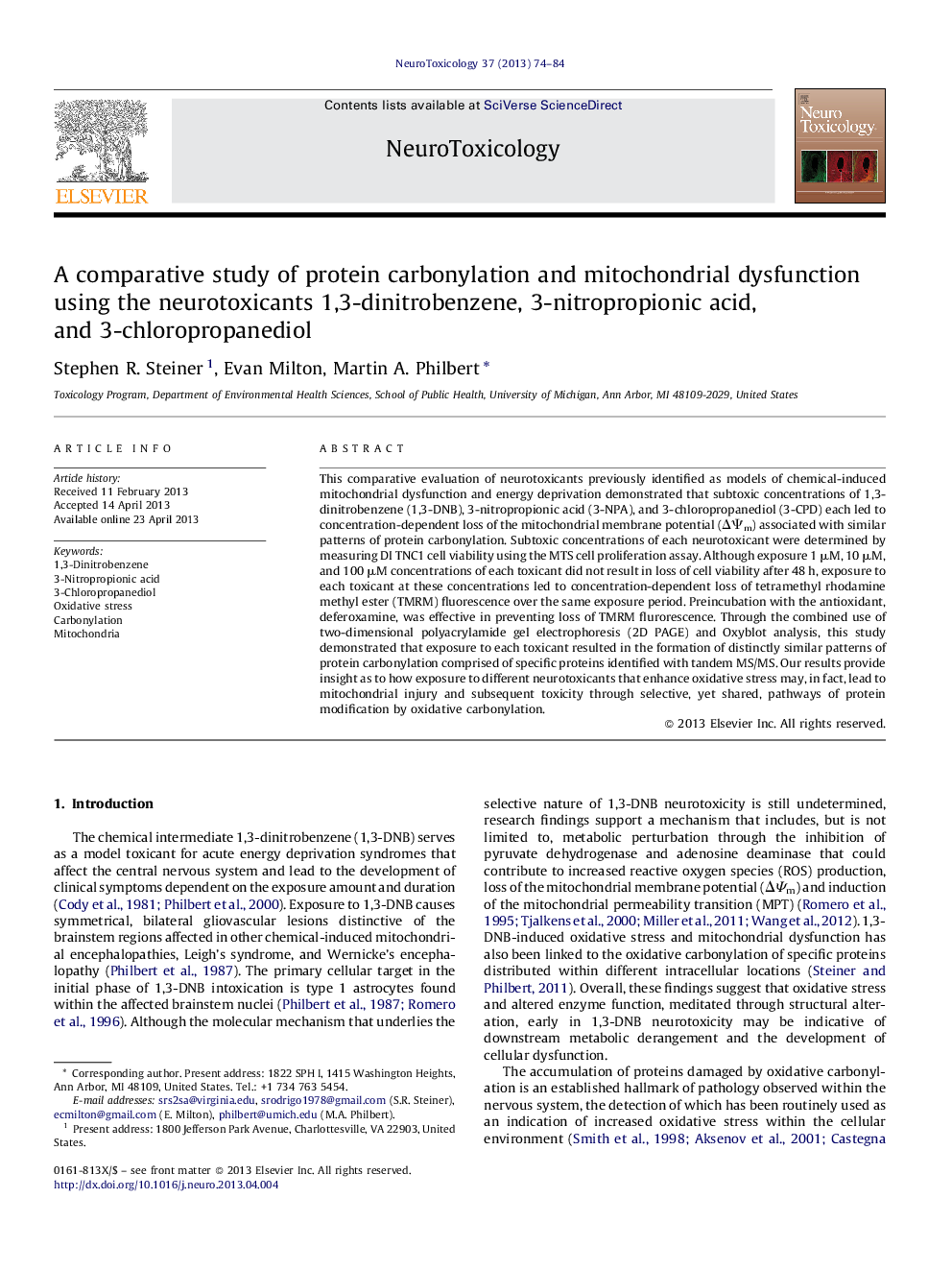| Article ID | Journal | Published Year | Pages | File Type |
|---|---|---|---|---|
| 5855044 | NeuroToxicology | 2013 | 11 Pages |
â¢Subtoxic concentrations caused mitochondrial dysfunction without affecting viability.â¢Each neurotoxicant led to concentration-dependent decreases in TMRM fluorescence.â¢The antioxidant, deferoxamine, protected against loss of TMRM fluorescence.â¢Exposure to 100 μM of each toxicant led to similar patterns of protein carbonylation.
This comparative evaluation of neurotoxicants previously identified as models of chemical-induced mitochondrial dysfunction and energy deprivation demonstrated that subtoxic concentrations of 1,3-dinitrobenzene (1,3-DNB), 3-nitropropionic acid (3-NPA), and 3-chloropropanediol (3-CPD) each led to concentration-dependent loss of the mitochondrial membrane potential (ÎΨm) associated with similar patterns of protein carbonylation. Subtoxic concentrations of each neurotoxicant were determined by measuring DI TNC1 cell viability using the MTS cell proliferation assay. Although exposure 1 μM, 10 μM, and 100 μM concentrations of each toxicant did not result in loss of cell viability after 48 h, exposure to each toxicant at these concentrations led to concentration-dependent loss of tetramethyl rhodamine methyl ester (TMRM) fluorescence over the same exposure period. Preincubation with the antioxidant, deferoxamine, was effective in preventing loss of TMRM flurorescence. Through the combined use of two-dimensional polyacrylamide gel electrophoresis (2D PAGE) and Oxyblot analysis, this study demonstrated that exposure to each toxicant resulted in the formation of distinctly similar patterns of protein carbonylation comprised of specific proteins identified with tandem MS/MS. Our results provide insight as to how exposure to different neurotoxicants that enhance oxidative stress may, in fact, lead to mitochondrial injury and subsequent toxicity through selective, yet shared, pathways of protein modification by oxidative carbonylation.
